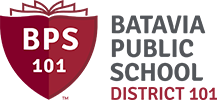6:235 Access to Electronic Networks
Electronic networks are a part of the District’s instructional program and serve to promote educational excellence by facilitating resource sharing, innovation, and communication.
The term electronic networks includes all of the District’s technology resources, including, but not limited to:
- The District’s local-area and wide-area networks, including wireless networks (WiFi), District-issued Wi-Fi hotspots, and any District servers or other networking infrastructure;
- Access to the internet or other online resources, via the District networks or to any District-issued online account from any computer or device, regardless of location;
- District-owned or District-issued computes, laptops, tablets, phones or similar devices.
The Superintendent or designee shall develop an implementation plan for this policy and appoint system administrator(s).
The School District is not responsible for any information that may be lost or damaged, or become unavailable when using the network, or for any information that is retrieved or transmitted via the Internet. Furthermore, the District will not be responsible for any unauthorized charges or fees resulting from access to the Internet.
Curriculum and Appropriate Online Behavior
The use of the District’s electronic networks shall: (1) be consistent with the curriculum adopted by the District as well as the varied instructional needs, learning styles, abilities, and developmental levels of the students, and (2) comply with the selection criteria for instructional materials and library resource center materials. As required by federal law and Board policy 6:060, Curriculum Content, students will be educated about appropriate online behavior, including but not limited to: (1) interacting with other individuals on social networking websites and in chat rooms, and (2) cyber-bullying awareness and response. Staff members may, consistent with the Superintendent’s implementation plan, use the Internet throughout the curriculum.
The District’s electronic network is part of the curriculum and is not a public forum for general use
Acceptable Use
All use of the District’s electronic networks must be: (1) in support of education and/or research, and be in furtherance of the goals stated herein, or (2) for a legitimate school business purpose. Use is a privilege, not a right. Users of the District’s electronic networks have no expectation of privacy in any material that is stored, transmitted, or received via the District’s electronic networks. General rules for behavior and communications apply when using electronic networks. The District’s Authorization for Electronic Network Access contains the appropriate uses, ethics, and protocol. Electronic communications and downloaded material, including files deleted from a user’s account but not erased, may be monitored or read by school officials.
Internet Safety
Technology protection measures shall be used on each District computer with Internet access. They shall include a filtering device that protects against Internet access by both adults and minors to visual depictions that are: (1) obscene, (2) pornographic, or (3) harmful or inappropriate for students, as defined by federal law and as determined by the Superintendent or designee. The Superintendent or designee shall enforce the use of such filtering devices. An administrator, supervisor, or other authorized person may disable the filtering device for bona fide research or other lawful purpose, provided the person receives prior permission from the Superintendent or system administrator. The Superintendent or designee shall include measures in this policy’s implementation plan to address the following:
- Ensure staff supervision of student access to online electronic networks,
- Restrict student access to inappropriate matter as well as restricting access to harmful materials,
- Ensure student and staff privacy, safety, and security when using electronic communications,
- Restrict unauthorized access, including “hacking” and other unlawful activities, and
- Restrict unauthorized disclosure, use, and dissemination of personal identification information, such as, names and addresses.
Authorization for Electronic Network Access
Each staff member must sign the District’s Authorization for Electronic Network Access as a condition for using the District’s electronic network. Each student and his or her parent(s)/guardian(s) must sign the Authorization before being granted unsupervised use.
Confidentiality
All users of the District’s computers to access the Internet shall maintain the confidentiality of student records. Reasonable measures to protect against unreasonable access shall be taken before confidential student information is loaded onto the network.
Violations
The failure of any user to follow the terms of the Authorization for Electronic Network Access, or this policy, will result in the loss of privileges, disciplinary action, and/or appropriate legal action.
Cross Reference:
5:100 Staff Development Program
6:040 Curriculum Development and Instructional Resources
6:235-AP1 Acceptable Use of Electronic Networks
6:235-E1 Student Authorization for Electronic Network Access
6:235-E2 Exhibit – Staff Authorization for Electronic Network Access
6:260 Complaints About Curriculum, Instructional Materials, and Programs
7:130 Student Rights and Responsibilities
7:310 Restrictions on Publications
Legal Reference(s):
No Child Left Behind Act, 20 U.S.C. §6777.
Children’s Internet Protection Act, 47 U.S.C. §254(h) and (l).
Enhances Education Through Technology, 20 U.S.C §6751 et seq.
47 C.F.R. Part 54, Subpart F, Universal Service Support for Schools and Libraries.
Date Adopted: October 13, 2007
Date Amended: October 23, 2012
Date Amended: August 24, 2021



